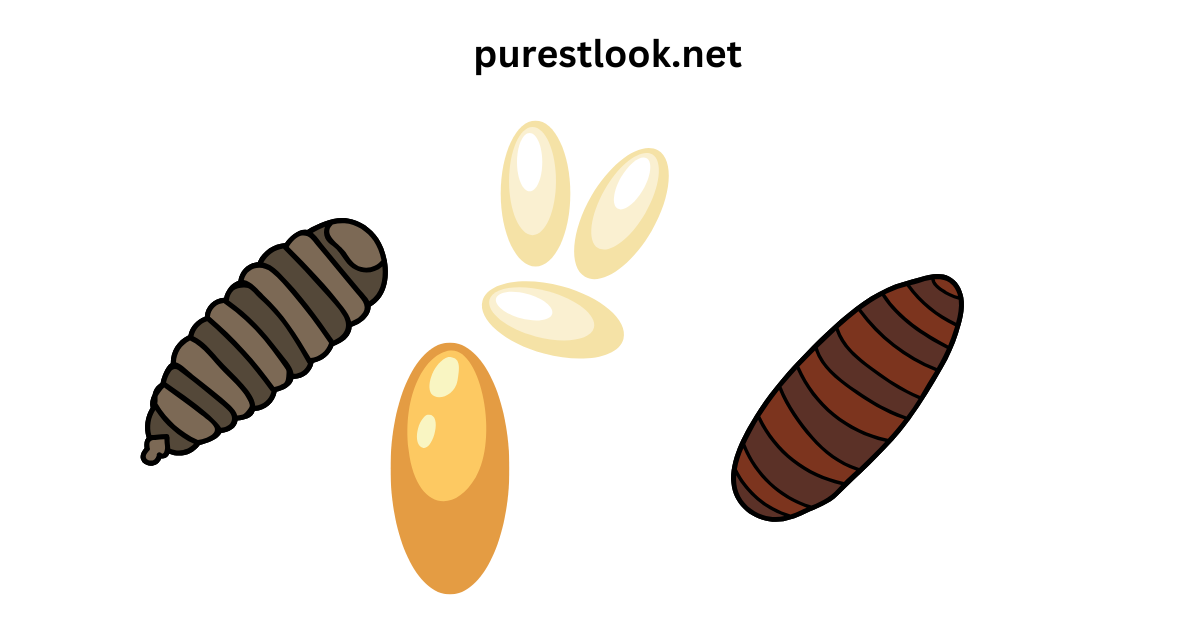Fly infestations can be an unsettling experience, especially when you discover clusters of tiny eggs in unexpected places. Identifying fly eggs is the first step to controlling and preventing their spread. This guide offers clear information on their appearance, where they are commonly found, and practical tips to manage them.
What Do Fly Eggs Look Like?
Fly eggs are small, elongated, and often white or off-white. Measuring about 1-2 millimeters, these eggs are typically laid in clusters, appearing like tiny grains of rice. Their texture is smooth, and they may be found in moist or decaying organic matter.
Common Places to Find Fly Eggs
Fly eggs are frequently found in locations where flies can access organic material. These include:
- Trash bins: Especially those containing food waste.
- Compost heaps: Rich in decaying plant material.
- Animal waste: A common site for certain fly species.
- Rotting food: Including fruits, vegetables, and meat.
Fly Egg Life Cycle
Understanding the life cycle of flies is essential to breaking their breeding patterns.
| Stage | Description | Time Frame |
|---|---|---|
| Egg | Laid in moist organic material | 8-24 hours to hatch |
| Larva (Maggot) | Feeds on decaying matter | 3-5 days |
| Pupa | Transforms into an adult fly | 5-7 days |
| Adult | Capable of reproducing immediately | Lives 15-30 days |
Identifying Fly Eggs Based on Species
Different types of flies lay eggs with subtle variations.
- Houseflies: Small, white, and clustered eggs.
- Blowflies: Slightly larger eggs, laid on meat or carcasses.
- Fruit flies: Tiny eggs, often found on overripe fruit.
How to Prevent Fly Eggs in Your Home
Effective prevention methods include:
- Maintaining cleanliness: Regularly empty trash bins and clean surfaces.
- Storing food properly: Use airtight containers.
- Fixing leaks: Avoid creating moist environments where flies thrive.
- Installing screens: Prevent flies from entering your home.
Natural Remedies to Eliminate Fly Eggs
Natural approaches can reduce reliance on chemicals:
- Vinegar spray: Mix equal parts water and vinegar to clean areas where eggs are found.
- Salt and baking soda: Sprinkle in drains to deter flies.
- Essential oils: Lavender and eucalyptus act as repellents.
Chemical Solutions for Fly Egg Control
If natural remedies aren’t effective, consider these options:
- Insecticides: Choose products labeled for fly eggs and larvae.
- Professional pest control: For severe infestations.
- Bleach: Use in drains and bins for thorough disinfection.
Conclusion
Recognizing fly eggs and understanding their habits can significantly reduce the risk of an infestation. By maintaining cleanliness, using natural and chemical remedies appropriately, and addressing potential breeding grounds, you can protect your home from these unwanted pests. With vigilance and timely action, preventing fly infestations becomes an achievable task.
FAQs
What do fly eggs look like to the naked eye?
Fly eggs are tiny, white, and rice-shaped, often found in clusters on moist surfaces.
How long does it take for fly eggs to hatch?
Fly eggs typically hatch within 8-24 hours under suitable conditions.
Can fly eggs be harmful to humans?
While not directly harmful, fly eggs can lead to infestations, spreading bacteria and diseases.
What surfaces do flies prefer for laying eggs?
Flies prefer moist, organic surfaces such as trash, rotting food, and animal waste for laying eggs.
How can I safely remove fly eggs from my home?
Use a combination of cleaning agents, vinegar sprays, and proper waste disposal to eliminate eggs safely.
